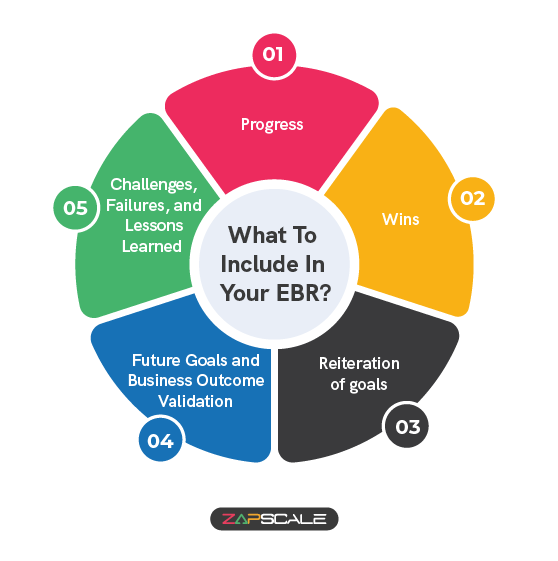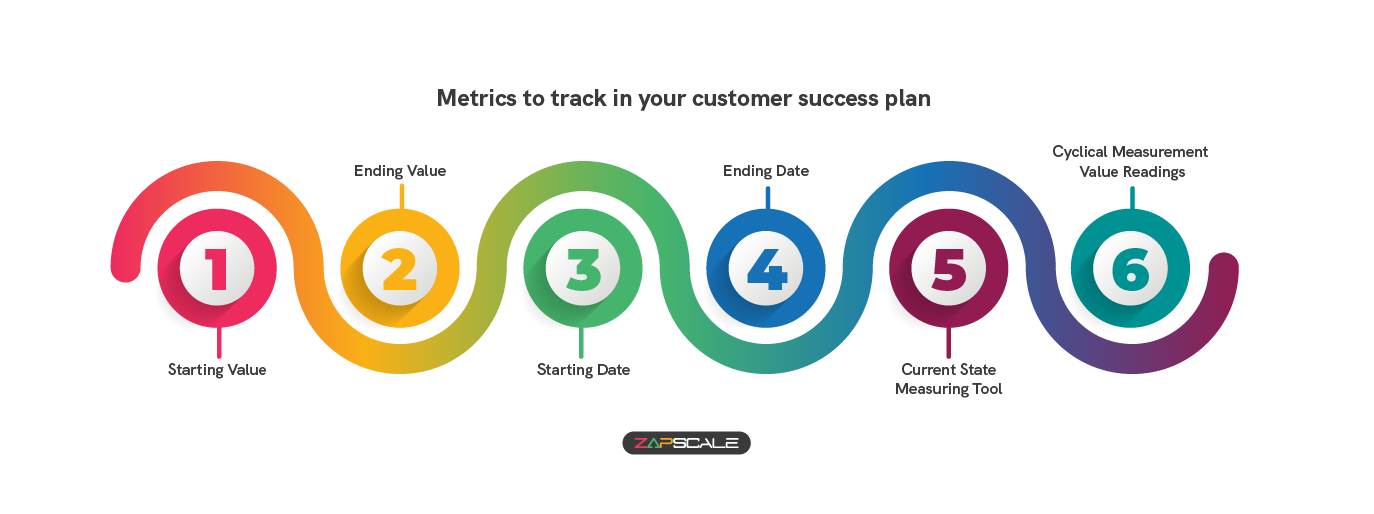CATEGORY > QBRs and EBRs
Executive Business Reviews (EBRs) and Quarterly Business Reviews (QBRs) Best Practices

Introduction
This article will cover what to do and what not to do to execute an effective QBR or EBR. These meetings aren’t difficult if you know what to do and share. You want to have a well-attended meeting, which means keeping them interesting.
But what does that mean? We’ll take a deeper look into the DOs and DON'Ts of delivering an effective Executive and Quarterly Business Review.
What are QBRs and EBRs?
A Quarterly Business Review (QBR) or Executive Business Review (EBR) is a meeting companies hold with their customers to review progress to stay aligned and ensure success.
They are essentially the same, only their frequency changes. QBRs occur quarterly and EBRs occur at a frequency that is agreed upon between the vendor and the customer. Regardless of the chosen frequency, record where QBR or EBR documentation will be stored and EBR frequency within the customer success plan.
Note: For the remainder of this article, EBR is interchangeable with QBR.
What is the importance of an EBR or a QBR?
The most important element of your EBR meeting is to communicate the value you have delivered since your last meeting because if done correctly this will ensure a renewal.
The next most important element is to convey newly discovered customer goal opportunities through conversation, which represents upsell and cross-sell possibilities. This also facilitates renewals by keeping your competition at bay because you are constantly bringing fresh new ideas to your customer relationship which your customer perceives as value.
This is often how churn starts. Alternatively, the vendor who continually brings value to the customer relationship wins that customer.
If you are adding value that maps to the customer’s goals and business outcomes and can prove it, then you will become an integral part of their business, not a “nice to have”.
This means they can’t do without you and your product if their business is to thrive. Because you are actively adding to your customer’s success, they will acknowledge you and your company as a contributor to their success.
I heard a story where a struggling company was able to turn around their business because a vendor enabled it to do so. This is an optimal position for your company to be in because it creates life-long loyalty.
If you want to keep your customers, you need to bring more customer value to your conversations continuously, don’t allow your competition to step in between you and your customer and cause you to churn. As the incumbent solution, you have a lot of leverage in keeping your customer but don’t become arrogant or complacent.
The components of an Executive Business Review
To optimally leverage customer success, everything revolves around the customer. This means working collaboratively with them.
The EBR is an opportunity to report successes, progress, challenges, failures, and lessons learned since the last EBR. This acts as your scorecard since your last EBR.
Another way of looking at it is to think of your EBR as an opportunity to show the value you deliver to your customers.
Important components to consider including in your EBR

1. Progress
- Status and progress of open items since last EBR.
- New areas are ripe for improvement (additional opportunities)
2. Wins
- Delivered value as noted in the success plan under business outcomes and proved by KPIs
- Additional and unplanned delivered value
3. Reiteration of goals
4. Future goals and business outcome validation.
- Updated customer success plan
- Identified OKRs and KPI measurement tools and amounts
5. Challenges, failures, and lessons learned
- Situation
- Action
- Result
- Lessons learned and corrective actions to eliminate or mitigate future occurrences
What you include in your EBRs will depend upon your business and your customers. You may want to include all of the above components, some of them, or others not mentioned. The key is to show and prove the value you delivered to your customer’s business. More on this later.
Suffice it to say that proving value starts with a great onboarding experience, which is not in the scope of this article. However, you want to explain during your customer’s onboarding that as a partner in their success, there will be ongoing EBRs, why they are important, and who needs to attend them.
How to get the most out of your EBRs?
Make EBRs a time to celebrate victories, build relationships, and source or confirm additional business intelligence like future direction, programs, projects, goals, and so forth.
The most effective way to gather customer information is to talk before the formal meeting and end with a casual dining experience.
Be creative if this isn’t possible because the meetings before and after the formal meeting are where the best information is gathered, delved into, and understood.
This intelligence allows you to understand where you can help more by upselling, cross-selling, or in ways that don’t result in either.
These conversations add additional value to your customer and thereby increase loyalty. You are a trusted advisor or a consultant ensuring their success beyond what they have or could do on their own.
You identify gaps in their business that your product can fill, which thereby improves their customer experience.
You must listen to them carefully and closely with an ear to find ways to increase your value to them.
As previously mentioned, if you don’t do this, then you put retention at risk because other vendors who do execute this way will become more desirable to your customers.
How to conduct an EBR meeting?
You may find having or allowing for a more conversational style discussion is more productive or preferred over having a formal meeting. If so, be flexible. If you do have a formal presentation, keep it as short as possible by showing the most important insights to allow for more discussion time.
It should be a time of back-and-forth conversation where topics and issues are noted and then worked on later when you are better prepared to speak to them. By working on them later, you have time to research and prepare so you can better help your customers. Tabling discussions also help to keep the meeting on track and briefer so future meetings are well attended.
You want to make the EBR as valuable and enjoyable to your customer as possible. Like any communication touchpoint, it needs to deliver value to your customers so they will look forward to meeting with you rather than avoid doing so.
So, keep to your agenda as much as possible without taking away from your customer relationship. You want this meeting to be one that they walk away from having gained a lot of insights and are happy to have attended it rather than not.
Who needs to be at the EBR from your company and theirs?
Sectionalize your EBR so all stakeholders are addressed but know which parts of the EBR they need to attend. This is especially important if you plan on having a longer meeting.
For example, Senior leadership may only be interested in the business components of the EBR and not in the underlying technical capabilities. However, IT leaders will be interested in the technical capabilities and other details. Such as which ones they have and are lacking that need to be acquired to meet their business goals.
Key points to notice during an EBR
- It is often better to conduct separate meetings for the business-oriented leaders and product users or other customer personas.
- If all customer stakeholders are in the same meeting, start with a summary of the business outcome objectives and accomplishments so that if the business leaders leave early, they don’t miss the most important aspect of your EBR meeting.
- Consolidate other meetings with a customer when appropriate by coordinating with your sales, support, customer success, and other teams. Establishing a single meeting or as few meetings as possible with the same customer stakeholders will be appreciated and improve their experience and attendance.
- Know who from your company is going to attend your client’s EBR. It may be just you, but this needs to be understood. Also, choreographing the meeting for each of your team members will improve the customer’s EBR experience.
Why isn’t this method of delivering EBRs mainstream?
What detailed information goes into your EBR? You’ll find that the strategy shared here is rarely ever talked about. I’m unaware of any vendors following the approach outlined in this article. However, doing so will deliver an effective EBR.
The mistake often made is that vendors focus more on themselves than their customers.
Also, they may not have the capability to offer an EBR this way by not having the right KPIs in place or monitored or possibly some other reason. What makes this kind of EBR difficult to deliver is that it has to be set up correctly as part of the onboarding and documented in their customer success plan.
At the very least, you need to show progress toward your customer reaching or attaining their business outcomes and what contributions your offering made to that progression or attainment.
I spoke to a company trying to develop a tool that would decrease the time to develop an EBR slide deck and shared the ideas contained in this article. They were very surprised as many of these ideas were unknown to them.
I think it is because they are not easy to do, but they are effective. The reports you provide for your customers make great testimonials too. You may need to make them anonymous to share, but these stories will close new deals.
The intricacies of delivering an effective EBR
Even if vendors agree to measure success based on customer business outcome attainment, they don’t have a way to measure, prove, and accurately report it.
I wouldn’t be surprised if some customer success teams and customers determine real value delivered by “gut feel” or some non-important measure like product utilization or adoption.
Customers care very little about utilization and product adoption metrics.
The only value a customer gets by knowing these metrics is to determine if they are paying for something they aren’t using. But as good vendors, you should be informing a customer of this fact and down-selling them.
A better solution to down-selling is to find a way to tie unused product usage to a bonafide business value solution. Otherwise, you look bad for overcharging them for who knows how long while your ARR tanks when you down-sell them.
What your customer cares about is business outcome progress, attainment, and the impact your offering has delivered towards those goals.
Metrics to track your customer success plan
In your customer’s customer success plan track the following business outcome metrics:

- Starting value
- Ending value
- Starting date
- Ending date
- Current state measuring tool
- Cyclical measurement value readings (how often) for historical tracking and trending
The EBR is where you share the above information and report results. Because they agreed upon their customer success plan and you, the results are deemed to be a valid and accurate reflection of the value your company has provided to them.
If you aren’t already collecting this information, then you need to get with your customer and correct it. It may mean using existing tools that you have at your disposal, perhaps built into your product.
The best scenario would be to use the same measurement tool that your customer is using to measure their business outcomes and goals. Alternatively, you could hire nearshore resources to fill a business outcome tooling gap. I have worked with one of the best and can point you to them.
Other metrics and data-backed insights that accelerate customer business outcome progress or attainment are also good to share. They bring transparency to where your customer should allocate more resources.

But you must share a story that aligns the data to their business outcomes in some way. This is how you get credit for the value you deliver to your customers and have a successful EBR.
ABOUT THE AUTHOR

Kevin Levine
In a career of over 12 years as a global customer success strategist, change agent, and consultant, Kevin has acquired extensive experience in driving transformational customer success strategies, programs, and partnerships to expand customer success coverage, optimize customer lifecycle management, and maximize cross-sell, upsell and expansion sale moments within the customer journey.
Popular from QBRs and EBRs
Quality Content,
Straight To Your Inbox!
Subscribe for the latest blogs, podcasts, webinars, and events!

Write a Blog
If you have experience in CS and
a flair for writing, we’d love to
feature you.
Write to us on
hello@zapscale.com


